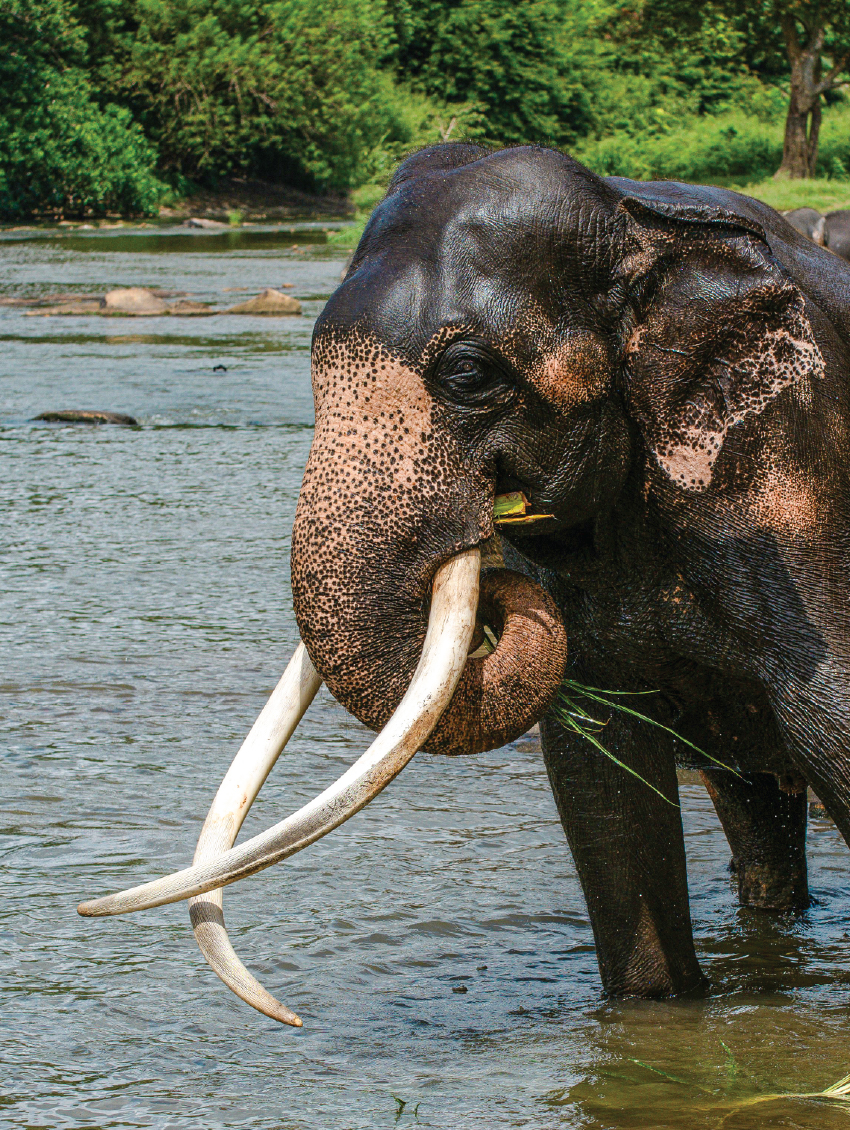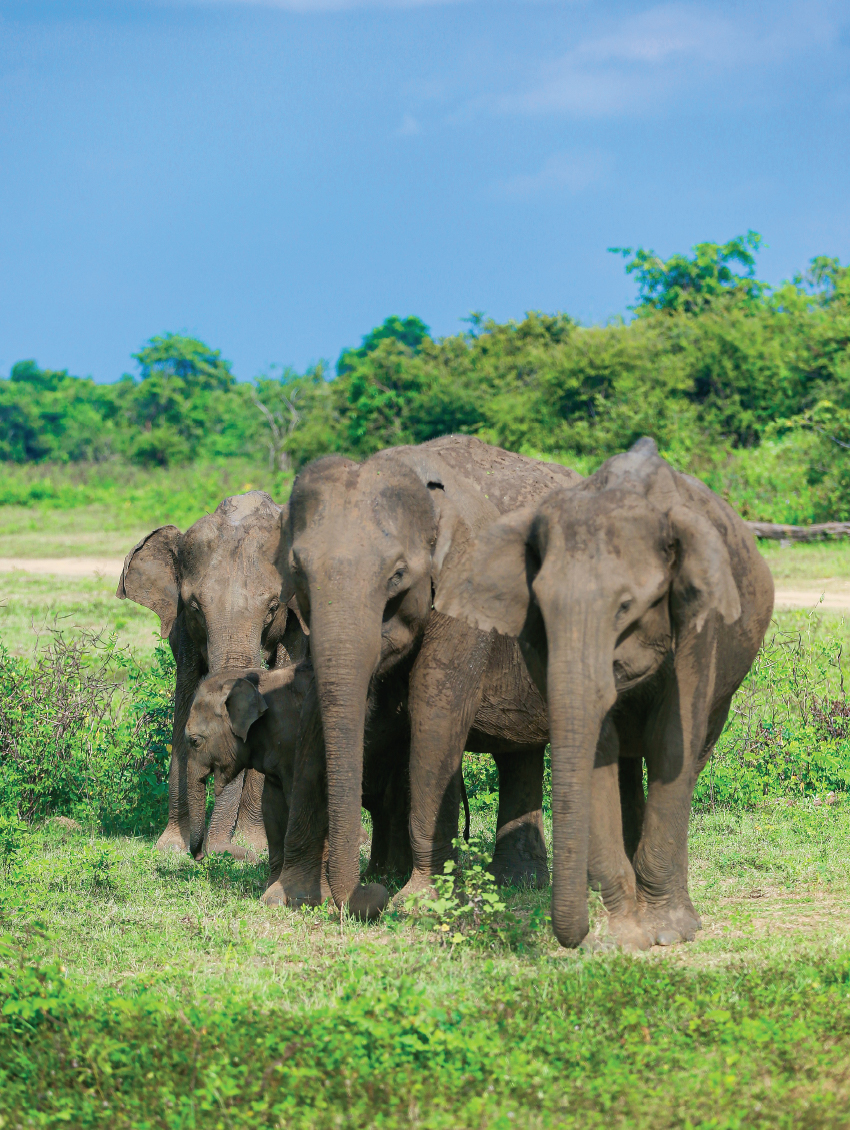
BOOK


CHECK RATES AND AVAILABILITY
Your island escape, just a few clicks away.
Check in | Check out
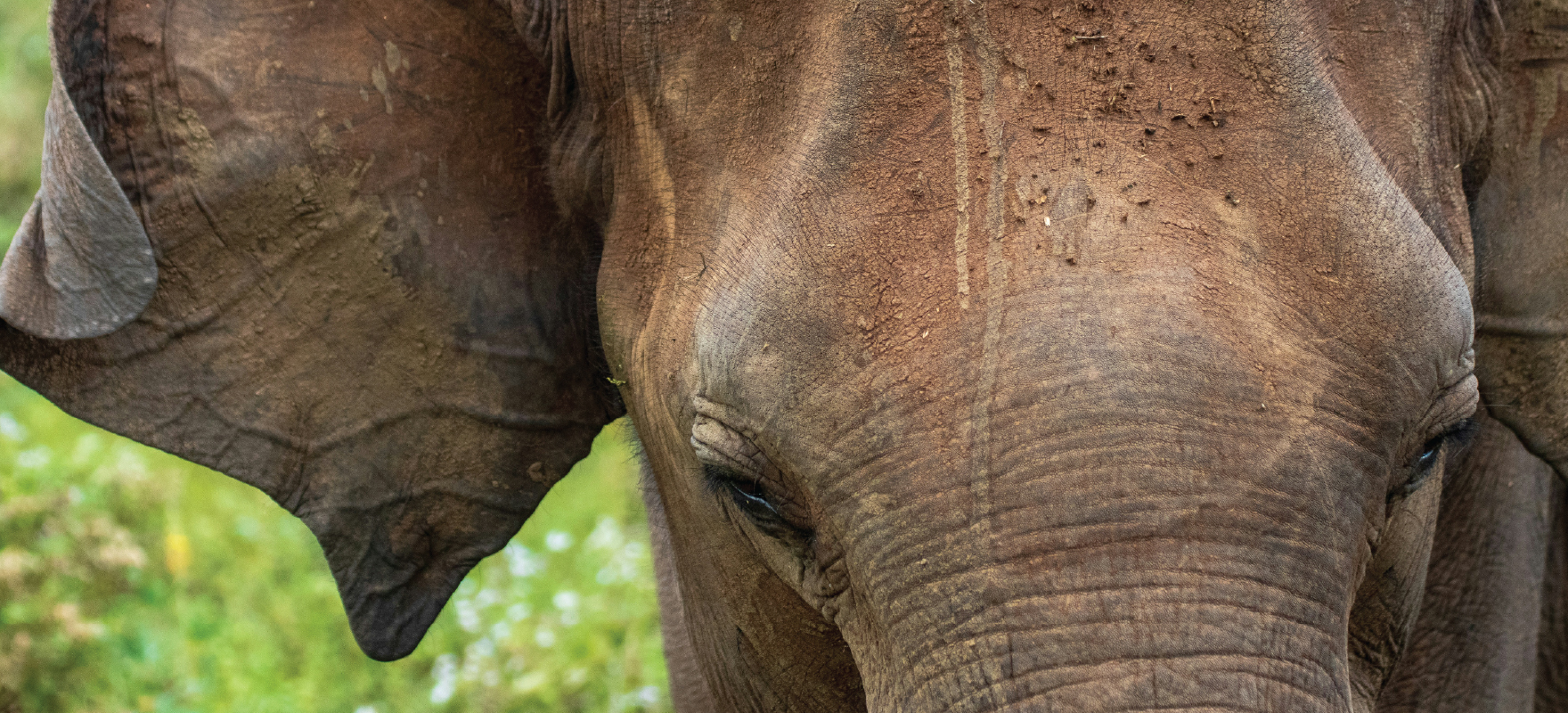
In Sri Lanka, elephants are not confined to reserves – they’re part of the island’s identity and history. Prior to Sri Lanka’s colonial period, elephants were widely distributed from the coast to the highest mountain ranges, and found in the dry zone, lowland wet zone as well as cold damp montane forests. Elephants were also a common element in Sinhalese and Sri Lankan Tamils heraldry and royalty for over two thousand years and remained so through British colonial rule.
The religious use of elephants in Sri Lanka has its origins in the early period of Buddhism in Sri Lanka, dating back to the 3rd century BCE – this is evident in the moonstones and guard stones found at the entrances of ancient palaces and temples. The coat of arms and the flag of Ceylon from 1875 to 1948 included an elephant and even today many institutions use the Sri Lankan elephant in their coat of arms and insignia. A cultural symbiosis continues to exist between elephants and Sri Lankans two thousand years later – many religious processions may feature a retinue of elephants.

Built by King Mahasen (277 to 304 CE, considered to be the greatest reservoir builder of the ancient world) to serve cultivation during the dry seasons, what was intended for human purpose are now sanctuaries for wildlife.
Between July and September, during what’s known simply as ‘The Gathering,’ herds of up to 300 elephants emerge from the forests of the North Central Province to congregate along the banks of the Minneriya Reservoir, a catchment area of 23,983 hectares. This seasonal marvel, considered one of the greatest wildlife spectacles in the world, is driven by the shrinking water levels and the promise of abundant fresh grass.
Minneriya and its neighbouring park, Kaudulla, form part of elephant home ranges that allows elephants to move freely between protected areas. On a good day, you’ll be rewarded with exceptional sightings – babies trailing their mothers, adolescent males mock sparring, and whole families bathing or dusting themselves in the golden light of evening.
WHEN TO VISIT:
If you’re hoping to see elephants in Sri Lanka’s Cultural Triangle, you’re in luck—they can be spotted year-round as they move between three wildlife sanctuaries. The famous elephant gatherings take place in Minneriya National Park between July and September, but herds can be seen at Kaudulla National Park and Hurulu Eco Park between June to December. We recommend checking with local wildlife authorities when picking the park to visit based on the movement of elephants.
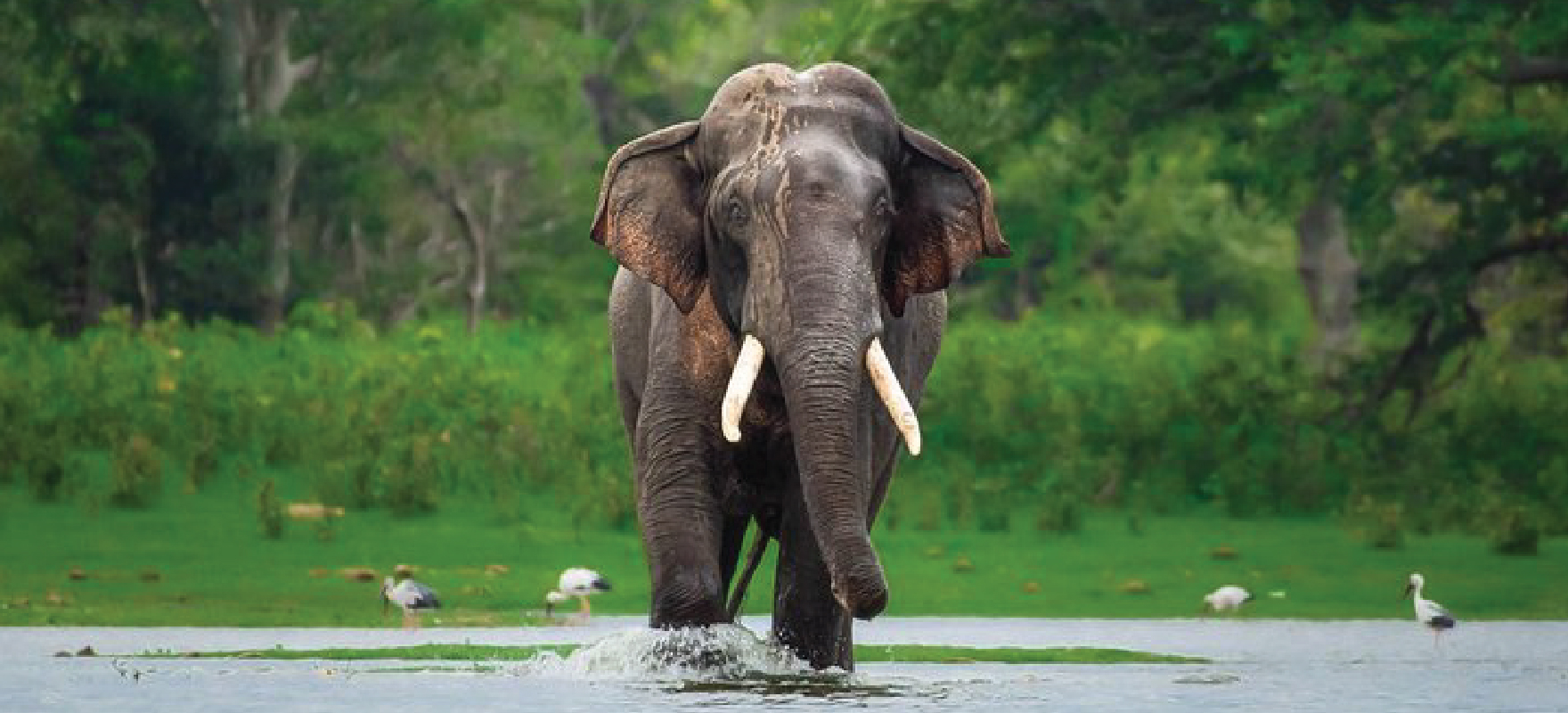
Fewer than 7% of male elephants in Sri Lanka have tusks, compared to 45% of bull elephants in North India and 95% in South India – so seeing one in the wild is considered a special blessing and incredibly lucky. Kala Wewa National Park and Galgamuwa Forest Range happen to be two elephant hotspots that offer the best chances of this rare and rewarding experience.
Located in the cultural triangle, these lesser-known parks hold the highest density of tuskers in Sri Lanka and are considered to be some of the last domains of big tuskers in the island. Unfortunately, these parks are not managed well by wildlife authorities, giving way to human-elephant conflict and resulting in elephants roaming outside protected sanctuaries.
BEST EXPERIENCED:
As part of a slow-travel itinerary through Sri Lanka’s cultural triangle, with a stay at a conservation-focused camp or eco-lodge.
WHEN TO VISIT:
Elephants can be spotted year-round, especially between July and October.
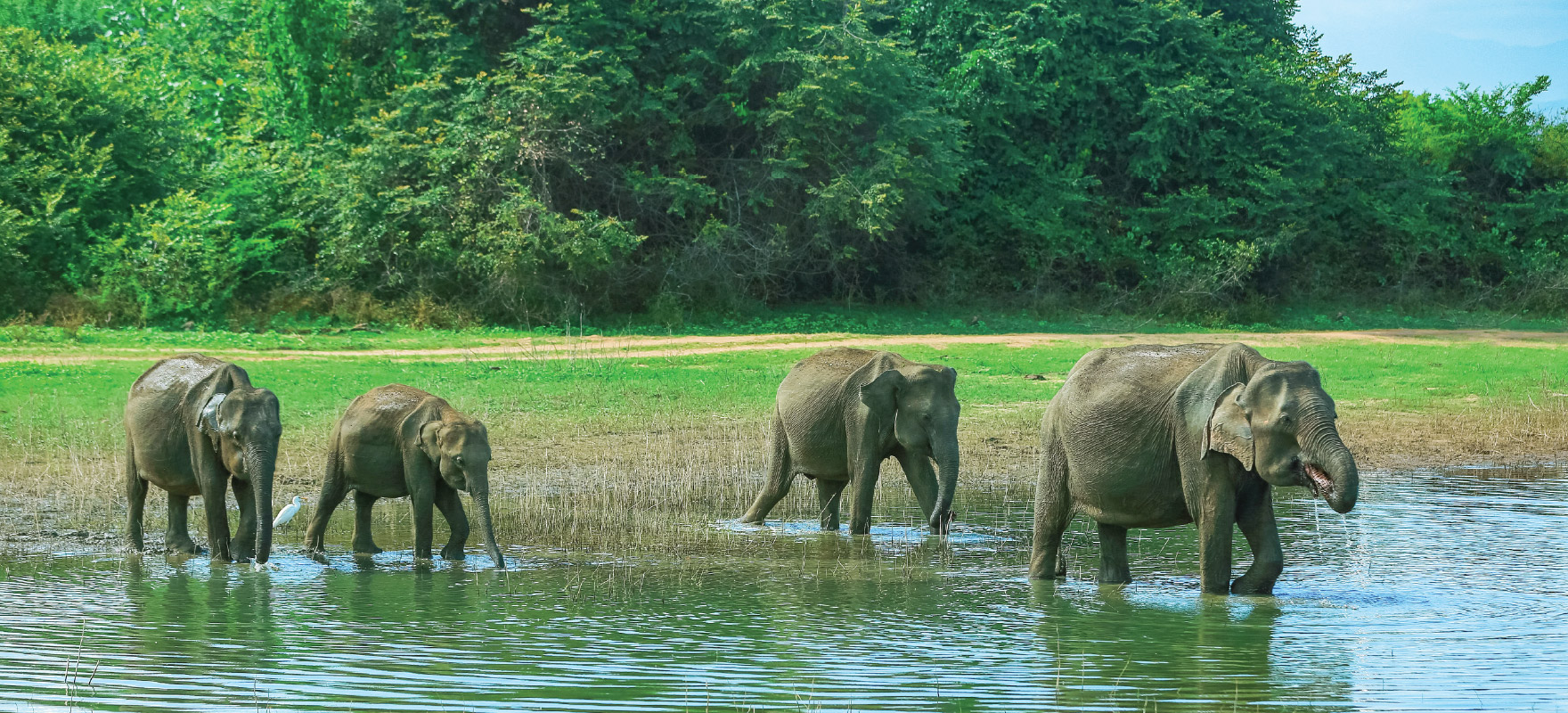
If your travels don’t coincide with The Gathering or the dry season in the east, Udawalawe is your best bet for consistent elephant encounters. Located on the border of Sri Lanka’s wet and dry zones, the park’s open grasslands and low scrub make for easier viewing, and it’s common to see multiple herds on a single drive. Mothers and calves often linger near the waterholes, offering intimate views of their social behaviour. Plan your stay between December and April to combine a Udawalawe safari with a whale watching trip in Mirissa.
GOOD TO KNOW:
Udawalawe is also home to the best elephant sanctuary in Sri Lanka, the Elephant Transit Home, where orphaned calves are rehabilitated before being reintroduced to the wild. Visits are possible during bottle feeding times at 10.30am, 2.30pm or 6pm and last about an hour to an hour and a half.
WHEN TO VISIT:
This park is home to several hundred elephants and offers frequent sightings throughout the year.
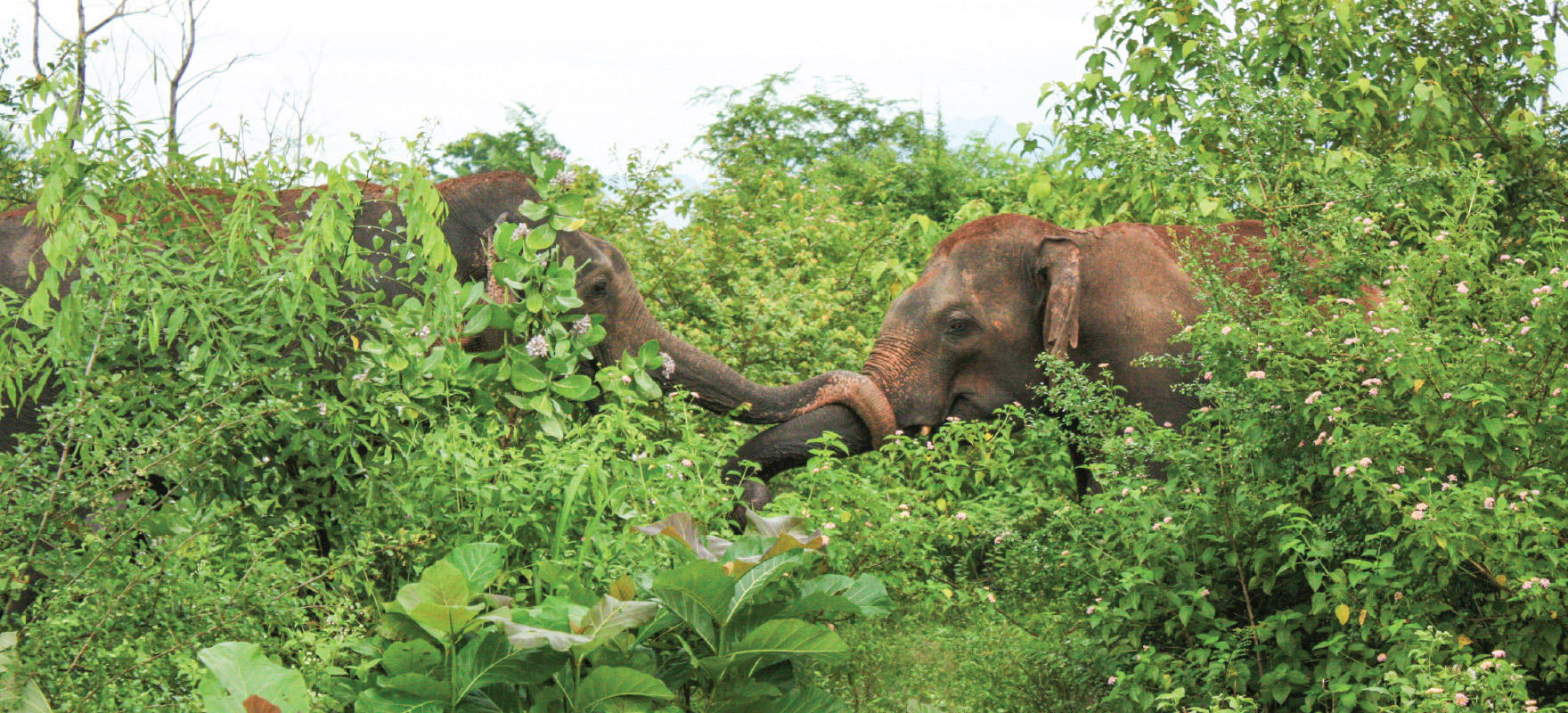
Seeing wild elephants in Somawathiya and Maduru Oya National Parks offers a raw, unfiltered glimpse into Sri Lanka’s untamed eastern wildlife. Both parks are historically significant, located in the northeastern province and home to a tribe of Sri Lanka’s indigenous vedda communities. Far less frequented than the island’s more established reserves, Somawathiya National Park is believed to have a herd ranging from 200 to 400 elephants, while Maduru Oya National Park, which lies in close proximity to Gal Oya (more on that below), is believed to have a herd of around 150 to 200, that roam freely through thick forest, open plains and along riverbanks.
In Somawathiya, elephants are often seen crossing floodplains near the Mahaweli River, especially during the dry season, while Maduru Oya’s rugged, jungle-clad landscapes hide old elephant corridors and waterholes where the animals gather at dusk
BEST EXPERIENCED:
As part of a slow-travel itinerary combining elephant safaris with down time on east coast beaches Nilaveli, Kalkudah and Pasikuda.
WHEN TO VISIT:
The best time to see elephants in larger herds is between July and September for Somawathiya National Park and May to September for Maduru Oya National Park
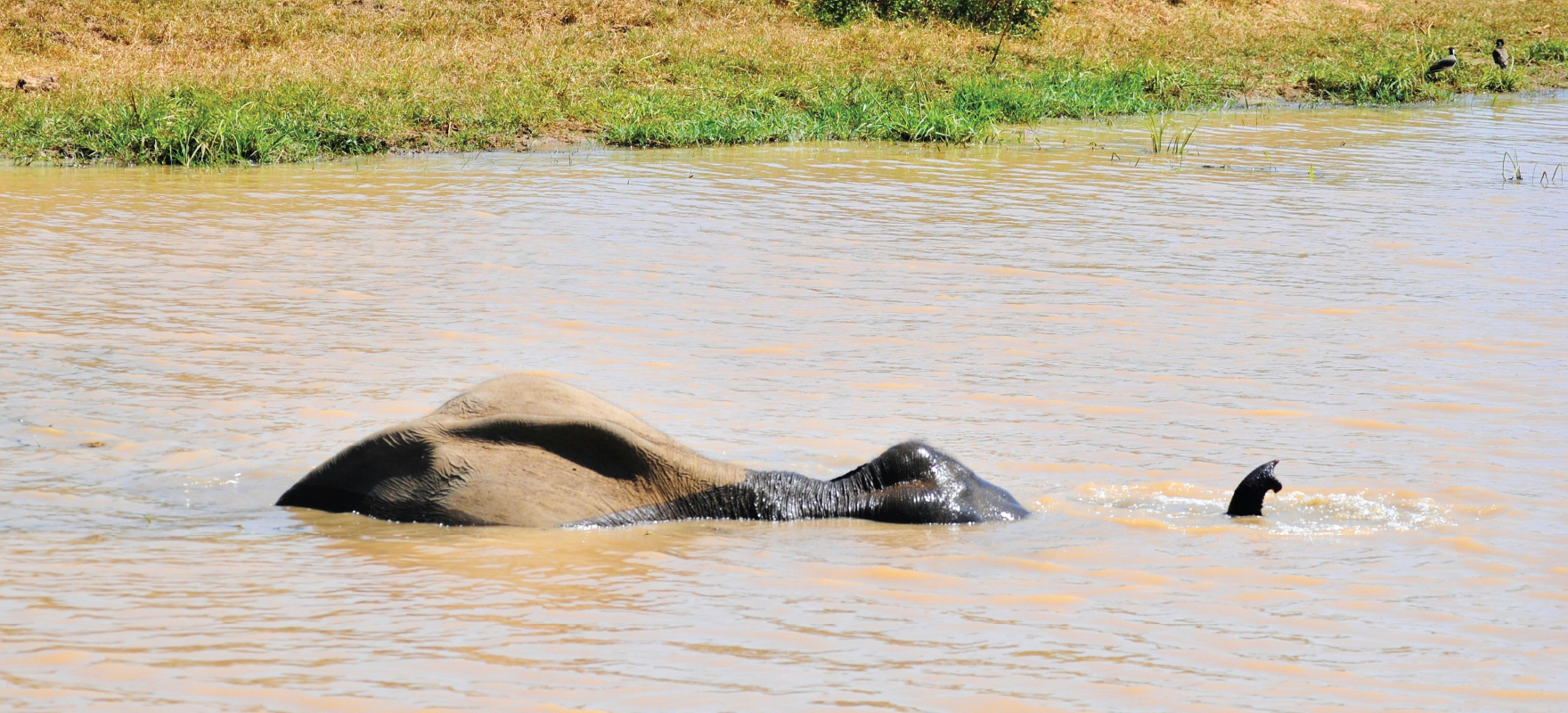
Gal Oya offers something rare when it comes to elephant watching in Sri Lanka: the chance to watch elephants swim – trunks raised like snorkels – as they cross the still waters of Senanayake Samudraya, Sri Lanka’s biggest reservoir and man-made lake. This remote park, located in the island’s east remains blissfully under-visited, making sightings feel deeply personal.
Boat safaris are the highlight here, allowing you to observe elephants from the water, without the dust or engine noise of a jeep – a novel experience and the only one of its kind found on the island. The surrounding landscapes of lowland forest and savannah are equally rich in birdlife and other species.
BEST EXPERIENCED:
Combine a boat safari with a naturalist-led walk with the indigenous Vedda community offer a deeper understanding of the land.
WHEN TO VISIT:
Gal Oya National Park can be visited throughout the year, but the period from March to July is recommended to see elephants bathe and swim between the islands.
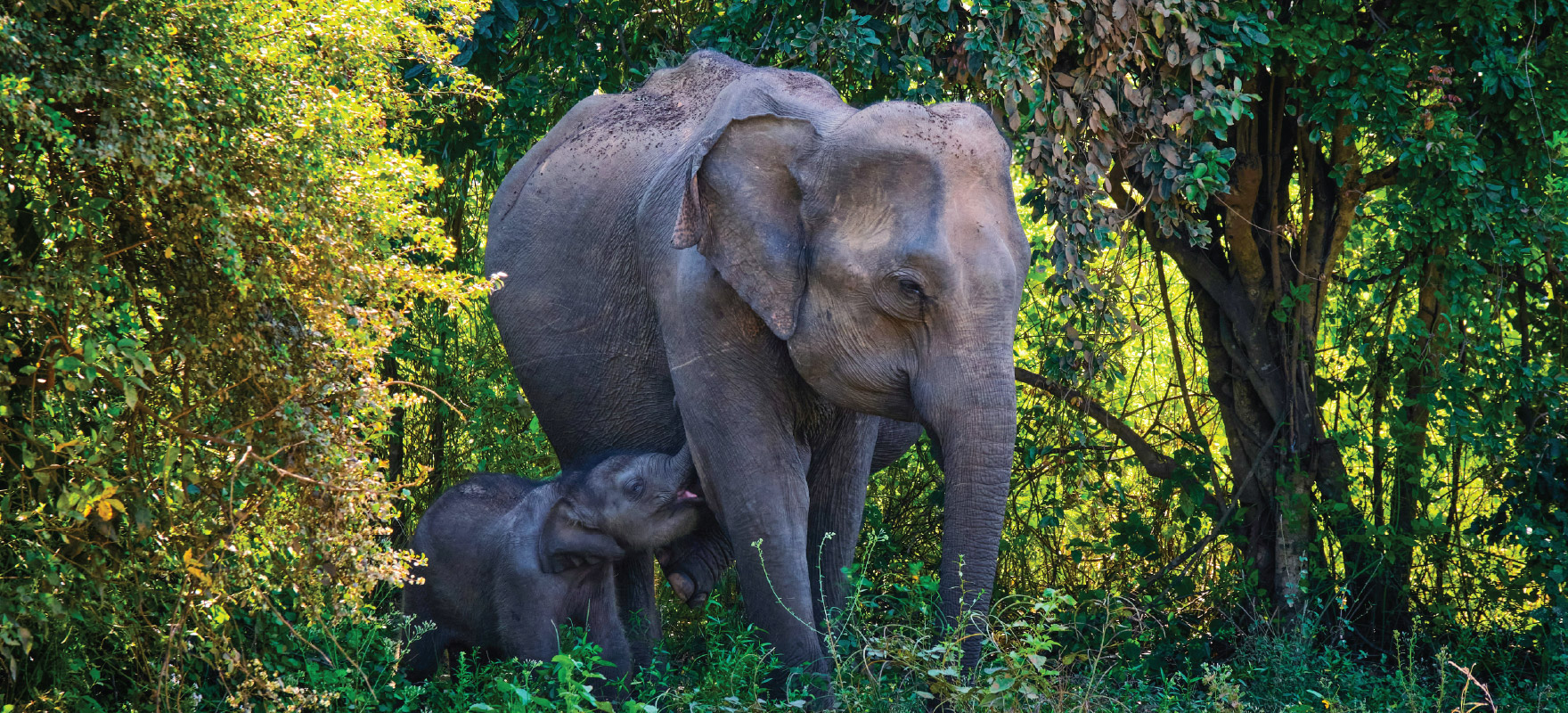
Just a 20-minute drive north of Arugam Bay lies Lahugala Kitulana National Park – one of Sri Lanka’s smallest wildlife sanctuaries. What it lacks in size, it makes up for in biodiversity, attracting a herd of up to 150 elephants that rely on the park as a feeding ground. This quiet reserve is not only a vital haven for Sri Lankan elephants, but for a variety of endemic bird species like the Red-faced Malkoha and Sri Lanka Spurfowl who reside in the park.
Kumana National Park, while best known for its birdlife, is a park that borders Yala, made up of open plains and forested patches and also shelter small herds of wild elephants. Here, sightings feel serendipitous – an elephant emerging from the trees to drink at a waterhole, or a lone bull crossing the dusty track at dusk.
WHEN TO VISIT:
The period between May to August are known for large herds of elephants at both parks, with up to 150 observed at a time.
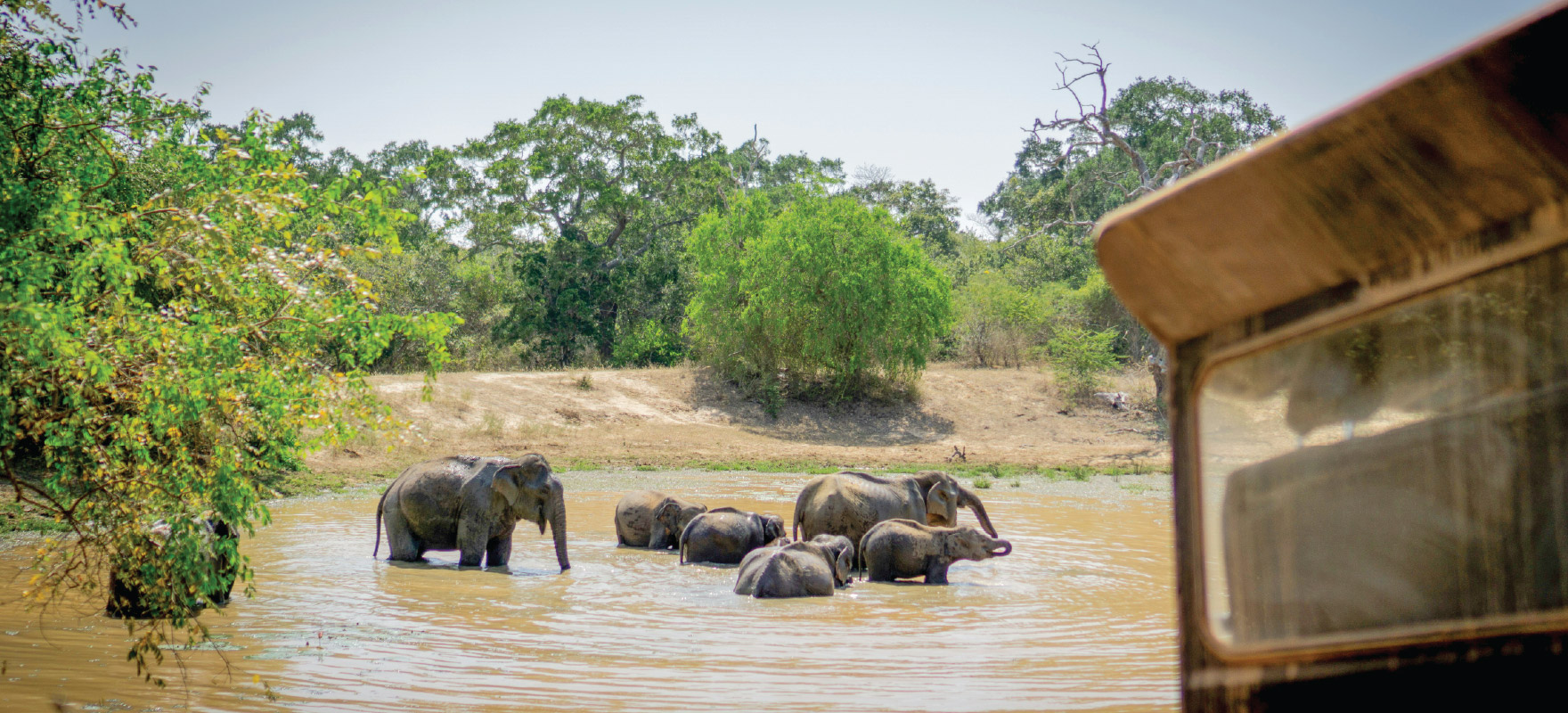
Yala is best known for its leopards, but elephants are often encountered here too – particularly in the quieter Block III, where sightings are frequent and the crowds are fewer.
The drama of the dry zone landscape – burnished earth, stark rock outcrops, and ancient tanks – makes every sighting feel cinematic. You might catch a lone bull wandering across the plains at dusk or a family of elephants bathing in a hidden pool between granite boulders.
Stay in lodges bordering the quieter sections of the park, and request drives in Yala’s less-visited blocks.
WHEN TO VISIT:
You can see elephants in Yala all year round, except from September to October, during which time the park is closed for a few weeks to allow its delicate ecosystem to recover after the long dry season. During the closure, waterholes begin to refill, and fresh vegetation starts to grow, providing vital resources for wildlife. It’s also a crucial breeding period for many species, making it important to minimise human disturbance.
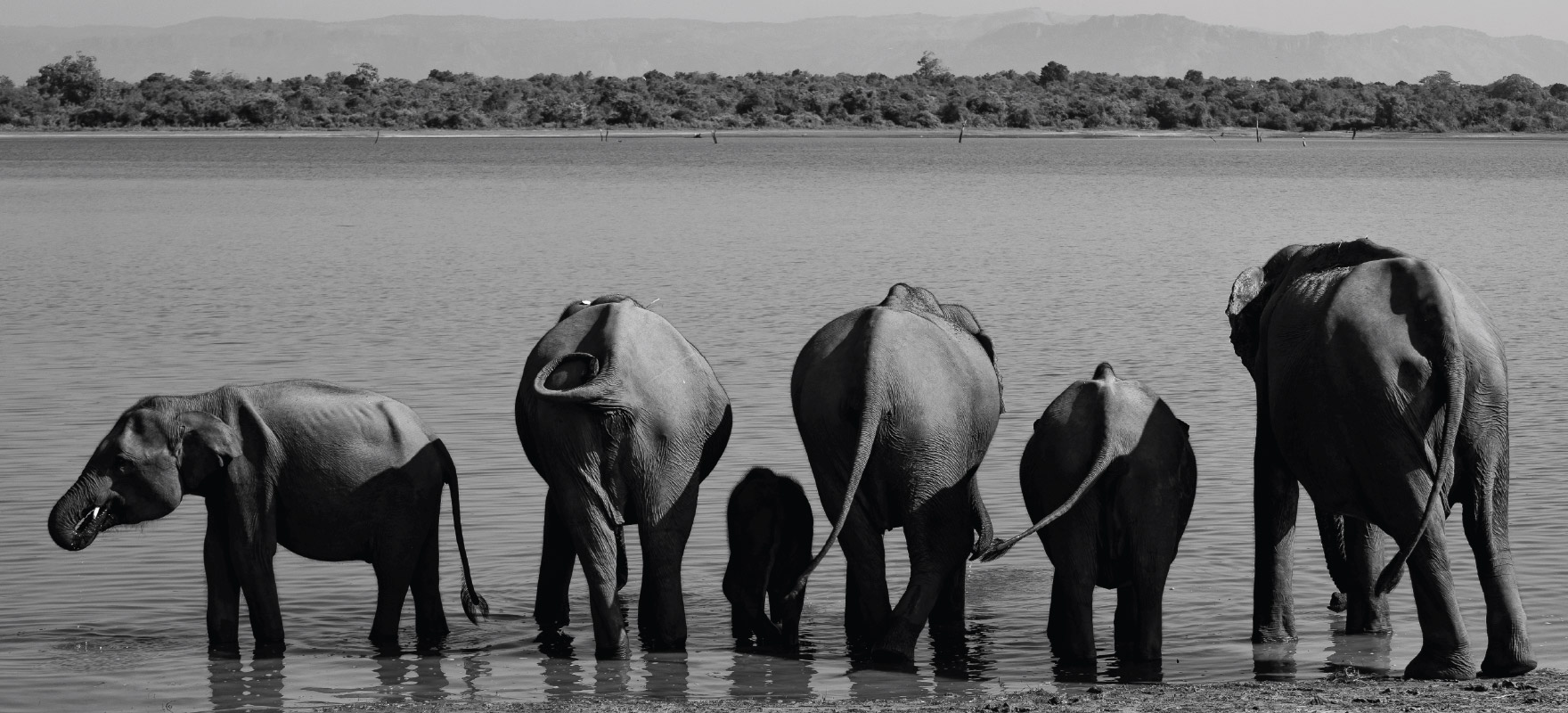
A: It’s estimated that Sri Lanka has the highest density of elephants in Asia, so chances are high. In Sri Lanka, elephants have home ranges which shrink or enlarge depending on weather patterns, so even in the island’s driest months, there’s still adequate food and water in these elephant home ranges, this is what makes sightings common. It’s very common to see elephants along roadways, reservoir banks and hotels that are located close to National Parks.
A: Elephas maximus maximus is the subspecies found in Sri Lanka. It is the largest and darkest of the Asian elephants.
A: Despite their numbers (there are an estimated 6000 wild elephants in Sri Lanka) the species has fallen almost 65% since the turn of the 19th century, mainly due to the Human Elephant Conflict, and have been listed as officially endangered by the International Union for Conservation of Nature (IUCN) since 1986.
A: A typical herd size in Sri Lanka ranges from 12-20 individuals or more.
A: We strongly advise against booking with any operator that promotes feeding elephants (even if it’s a drive by on a major highway) or elephant back rides. As a responsible organisation we strictly do not promote, encourage or work with any operator who offers elephant rides or feeding of wild elephants, as it leads to dependence on humans for food, further escalating the human-elephant conflict. A responsible safari operator will maintain at least 50 meters from an elephant in the wild
A: The duration of an elephant safari is usually 3-3.5 hours, either in the morning or afternoon. Durations can vary based on the transfer times to and from your hotel, the location of elephants and time spent on the sighting (with a group, you’ll spend less time compared to a private trip).
A: Wear earthy-coloured or neutral tones and avoid bright colours on a safari. Make sure to wear lightweight, cool clothing, sunglasses, a cap, and plenty of sunscreen. Some national parks can be hot and dusty, so make sure to stay hydrated.
